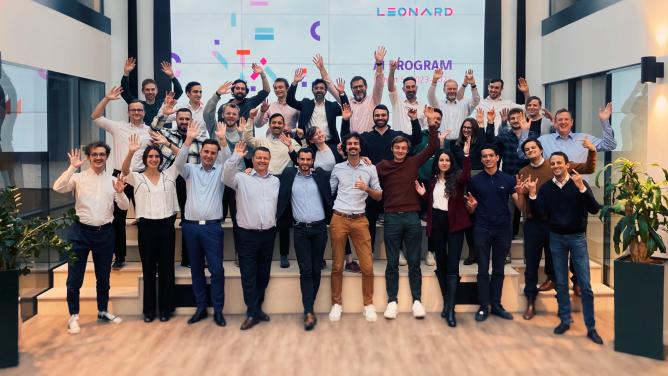The construction industry is highly proactive about preventing accidents. Over the last 10 years, the rate of incidents has been fairly stable in Europe and has declined sharply in France (29% decrease over 10 years). Nevertheless, the industry now faces new risks related not to construction sites themselves but to systemic changes. A study by ANSES (French government agency whose main mission is to assess health risks in food, the environment and work) published in 2018 revealed the impact of climate change on worker health. The highly comprehensive report identified three primary transformations: rising temperatures, new biological and chemical risks, and more frequent and intense climate events. 2020, the year of the COVID-19 pandemic and also one of the hottest on record, is the perfect illustration of these.
Climate change and working conditions
The effects of global warming are particularly hazardous. An international study by the University of Copenhagen and the University of Thessaly showed that water scarcity combined with high temperatures causes a 4% drop in the performance of cognitive tasks and a 16% decline in complex motor skills. Even more dramatically, the NRDC (Natural Resources Defence Council) estimates that since 1992, 70,000 workers (across all industries) in the United States have died due to heat illness. But those are not the only impacts of climate change. The increased frequency of extreme climate events (wildfires, floods, droughts) and spikes in pollution – all environmental effects caused by humans – are creating new health issues. As a result, the NRDC has issued a warning about fine dust particles whipped up by droughts. Between 1940 and 2015, over half of cases of valley fever (a fungal infection) around the world were caused by coccidioides spores carried by dust clouds.
Health risks: More relevant than ever
It is impossible to talk about systemic risks without mentioning the current global health situation. Construction workers have been hit especially hard by COVID-19. A study by the European Centre for Disease Prevention and Control ranks construction between the military and education sectors for number of clusters observed. Often considered essential, construction workers have had to choose between risking their jobs and getting sick. The construction industry has responded by working to ensure employee safety. In addition to safety measures, or even simply shutting down certain construction sites, drastic protocols have been put into place. Measures include designating a COVID contact person, reducing work performed in groups, and organising one-way foot traffic.
Climate change and pandemics are often closely linked even outside of the current crisis. Warmer temperatures can mean more mosquitoes, which transmit diseases like Zika and chikungunya. In the US, OSHA (Occupational Safety and Health Administration) recommends ways to prevent insects from breeding: get rid of standing water, drain reservoirs, empty rubbish bins daily, and ventilate enclosed spaces.
The importance of mental health
These global transformations complicate working conditions for those in construction, and in the city in general, sometimes to the point of creating mental health issues. A study by the CDC showed that in the US, men working in construction in the US were four times more likely than average (53 per 100,000) to die by suicide. In the UK, the rates are three times the national average. According to the Guardian, higher suicide rates are caused by worker isolation, lack of job security, the difficulties and risks inherent to certain jobs, and the pressures of a still highly male-dominated world. An article published in the International Journal of Environmental Research and Public Health notes that even climate change has an influence on the mental health of outdoor workers. Chess Connect, a non-profit dedicated to well-being at work, offers six ways to help improve mental health in construction workers: avoid making the subject taboo, encourage discussions, create an action plan, support employees, work on self-confidence, and take action against harassment.
New responses to new risks
Construction has traditionally focused on on-site safety rather than employee health. There are some initiatives but very few. In France, OPPBTP, a construction safety agency, updates its COVID-19 recommendations regularly. In the US, OSHA has offered a heat illness prevention programme for the construction industry since 2011. Things are also changing for mental health. Nuclear power station Hinkley Point C (HPC) in the UK is the perfect example. Upon noticing that the station’s suicide rate was 10 times its rate of fatal accidents, HPC designated 200 “mental health buddies,” someone workers can talk to. The station also hired a chaplain and a former boxing champion to talk about mental health and posted informational notices at the work site.
Greater structural change is needed beyond institutional recommendations and support for employees. A transition towards greener work sites will broadly reduced the impact of construction on the environment while also protecting worker health. Zero-emission work sites appear promising in this regard. In particular, the city of Oslo and its Clean Construction Policy are leading the way and expect to reduce emissions (greenhouse gases, fine particulates, and nitrogen oxide) by 95% by 2030. Advances in building technology also offer hope. Proponents of prefabricated and modular construction point to lower risks of accidents and contamination. Finally, some new technologies appear promising. A combination of the Internet of Things and artificial intelligence could predict health risks, automation could take over for humans in the most dangerous tasks and sites, and immersive virtual reality technology and gamification could offer a more effective way to educate staff


